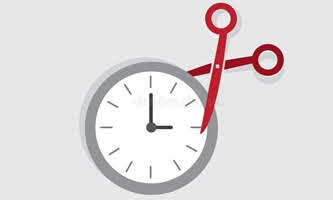Keep It Short, Sweetheart!
(Present a Proposal, Level 3-Innovative Planning, Jun 2, 2018, BFComm TMC, Gather Workspace, Las Piñas City. Evaluated by Ed Ramirez, ACG CL PM1)
(Present a Proposal, Level 3-Innovative Planning, Jun 2, 2018, BFComm TMC, Gather Workspace, Las Piñas City. Evaluated by Ed Ramirez, ACG CL PM1)
INTRODUCTION
Hey, do you guys like our new venue here at Gather Workspace? Yeah? It’s substantially bigger than the old one we had previously, right? I like it! For a President Distinguished Club that continues to grow in terms of membership, this venue fits the bill. However, to be able to continue to use this venue, we need to be more conscious with the way we manage our time. Why? We need to be able to start and finish (start-end gesture) our club meetings in 2 hours for the negotiated price we have with the facility. Beyond that, we need to pay extra (extra gesture). Good afternoon, everyone.
BODY
SEVERAL WAYS
(move right) There are a few ways where we can manage club meetings so we start and end on time. (itemize gesture) In some clubs, they limit the number of speakers. Some have shorter break times, or none at all. In some, they do away with items they deem are not necessary.
You might remember John, our visitor from London in a previous meeting. He said that in their club, they don’t recite the Toastmaster Promise nor have an Invocation like we do. These are some action items that we may consider doing in our club.
TIMING SPEECHES
(move center) And then... then there’s the KISS principle, K-I-S-S. And KISS stands for? Keep it Short, Sweetheart. Do we keep our speeches in time? Is the Meeting Timer and the timing lights device enough for keeping us from going overtime? I know I too am guilty of going overtime sometimes.
(move left) I read in an article in 2016 by Kean Holloway entitled First Time Timekeeper, that a few speakers miss the timing lights or cards, intentionally or otherwise. (itemize gesture) Maybe the lights are not visible enough, maybe the speaker has plenty of body movement and gestures that he sees the timing lights when it’s too late. Some, and this is the worst; some just ignore the timing lights even when it’s red.
I remember in another club where I became a member. The prepared speaker was really into it – she in the zone, so to speak. She spoke straight for 20 minutes! And this is for a 5-7 minute speech. For that amount of time, you could’ve added 2 more speakers in that slot.
(move center) In his article, Kean Holloway noted that they use a buzzer in addition to their timing device in their club meetings. For him, the buzzer is a much better signal compared to the timing device to tell the speaker he has gone overtime. The buzzer is a way to stop the speaker, sharply, instead of a timing device. And I agree! I believe an aural signal is a stronger signal than a visual one.
CLAPPING TECHNIQUE
But given that we don’t have a buzzer or a bell, then a no-cost alternative is by clapping. Here’s how it goes, when the speaker has gone overtime for too much, say 2 minutes – just an example. The Timer could start clapping even as the speaker is still speaking. When he does, then everyone else joins in. Hopefully, when everybody’s clapping, the speaker would stop. Clapping is something we do all the time, anyway, so it should be not be overly surprising. What’s reasonable overtime for the Timer to start clapping? 2 minutes overtime? 5 minutes overtime? It’s up to us. So whether it’s a bell or clapping, the aural signal is effective.
CONCLUSION
The bottomline is this. It is still the responsibility of the speaker to make sure that his speech is within time. The time duration you see on the project, like 5-7 minutes isn’t decoration about the speech. It’s part of the speech project requirements. By being on time, we will be better able to conduct our meetings. Especially now, when time is no longer a luxury. So, keep it short and stunning (word-of-the-day), sweetheart!
Toastmaster of the Day.


Post a Comment